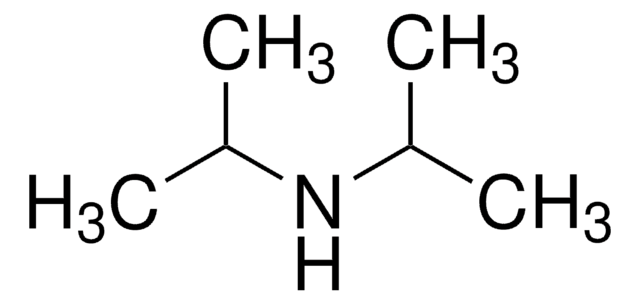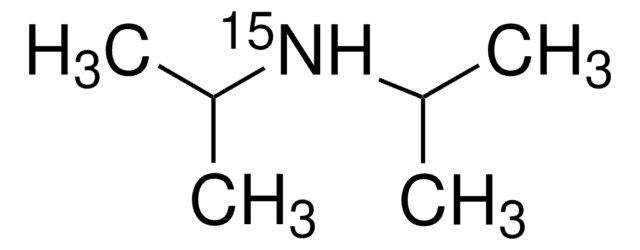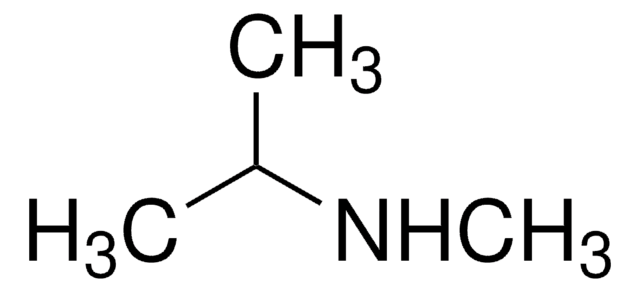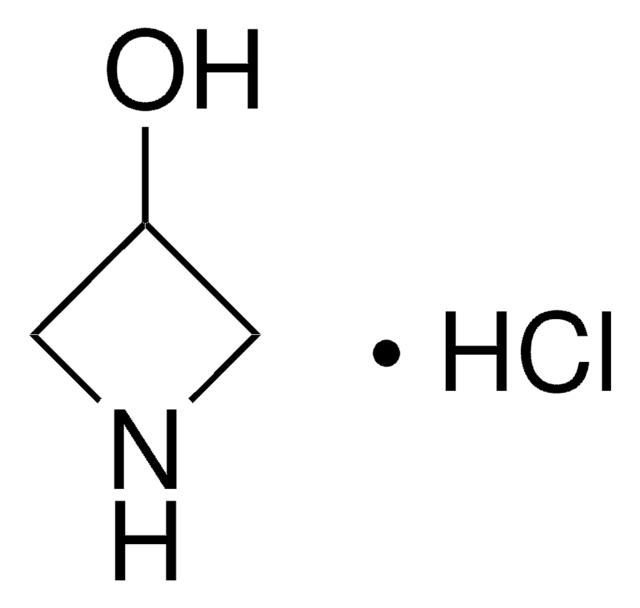All Photos(2)
About This Item
Linear Formula:
CH3(CH2)3NHCH2CH2CH3
CAS Number:
Molecular Weight:
115.22
EC Number:
MDL number:
UNSPSC Code:
12352100
PubChem Substance ID:
NACRES:
NA.22
Recommended Products
Assay
98%
refractive index
n20/D 1.412 (lit.)
bp
133-134 °C (lit.)
density
0.745 g/mL at 25 °C (lit.)
functional group
amine
SMILES string
CCCCNCCC
InChI
1S/C7H17N/c1-3-5-7-8-6-4-2/h8H,3-7H2,1-2H3
InChI key
CWYZDPHNAGSFQB-UHFFFAOYSA-N
General description
N-propylbutylamine is an aliphatic amine. It is formed when butylamine is heated with 1-propanol in the presence of Raney nickel. Its effect as a pore directing template on the pore size and surface area of microporous mixed metal oxides has been investigated. Some of its physical and thermophysical properties have been reported.
Signal Word
Danger
Hazard Statements
Precautionary Statements
Hazard Classifications
Flam. Liq. 3 - Skin Corr. 1B
Storage Class Code
3 - Flammable liquids
WGK
WGK 3
Flash Point(F)
77.0 °F - closed cup
Flash Point(C)
25 °C - closed cup
Personal Protective Equipment
dust mask type N95 (US), Eyeshields, Gloves
Regulatory Information
危险化学品
Choose from one of the most recent versions:
Certificates of Analysis (COA)
Lot/Batch Number
Don't see the Right Version?
If you require a particular version, you can look up a specific certificate by the Lot or Batch number.
Already Own This Product?
Find documentation for the products that you have recently purchased in the Document Library.
Control of micropore size in supermicroporous titania-chromia system TiO2-Cr2O3.
Delouis W, et al.
Inorganic Chemistry Communications, 9(11), 1136-1140 (2006)
Yaws CL.
Thermophysical Properties of Chemicals and Hydrocarbons, 41-41 (2008)
Yaws CL.
The Yaws Handbook of Physical Properties for Hydrocarbons and Chemicals, 175-175 (2015)
Alkylation of Amines with Alcohols Catalyzed by Raney Nickel. II. Aliphatic Amines.
Rice RG, et al.
The Journal of Organic Chemistry, 23(9), 1352-1354 (1958)
Oh Kyung Choi et al.
Journal of hazardous materials, 403, 123636-123636 (2020-08-28)
Solvent extraction desalination (SED) is one of the liquid-liquid separation techniques that selectively uptake freshwater from high saline water, and then separate the absorbed freshwater from the solvent through temperature swing. This study evaluated the desalination performance of seven different
Our team of scientists has experience in all areas of research including Life Science, Material Science, Chemical Synthesis, Chromatography, Analytical and many others.
Contact Technical Service










